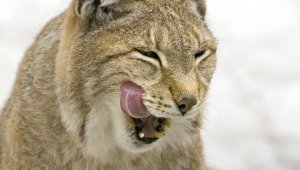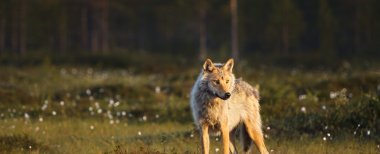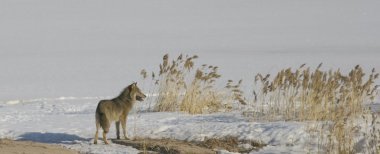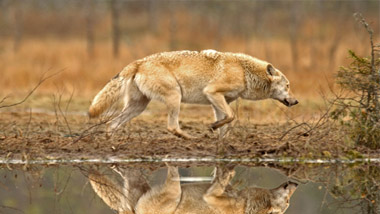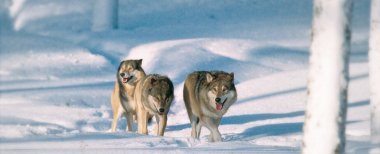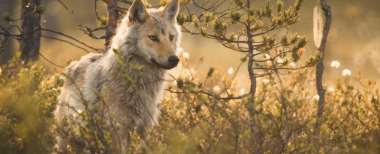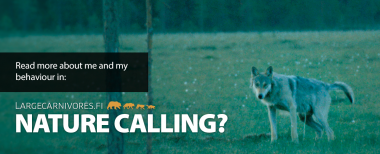Meeting a wolf
The wolf is a sizeable wild animal and large carnivore and you should remain calm and fearless when coming face to face with one. A rabid wolf or a wolf that is put on the defensive may harm a human, but this has not happened in Finland since the late 19th century.
Blog, professor Ilpo Kojola: Is there a predator pit in Karelia?
Thu Jan 19 11:17:00 2017
Large carnivores may have a major impact on moose population densities. A high density bear population may decrease moose calf production by >20%. In wolf pack territories with no substantial alternative prey species, such as white-tailed deer and reindeer, 25–50% of the annual increase of moose population may be taken by wolves, depending on territory size, pack size and local moose density.
A predator pit entails a situation where predation regulates a prey population at constantly low densities. That is, the consumption of prey by predators increases whenever prey populations begin to increase. The precondition for a predator pit to emerge is that more than one predator species share the same low density prey population, and that alternative prey species exist for the predators. With moose this concept traces some decades back to Southern Alaska where abundant populations of wolves, brown bear and black bears shared locally sparse moose population. This seems to presently hold true also with predation on moose in North Karelia.
It is, however, very unlikely that the low moose density of this region would sustain a high number of wolves for an extended period of time due to the absence of alternative ungulate prey. Furthermore, while wolves are more or less dependent on moose for food, moose do not have a big impact on its consumption rates by the omnivorous bear. The absence of alternative prey for the wolf may weaken the potential for its regulatory impact on moose and thus the emergence of a predator pit. Without alternative prey, wolf numbers will eventually decrease with decreasing moose population size.
The third consumer of moose, human being, has tools to regulate the abundance of both moose and its predators. An ideal eco-socio-economical management solution for moose populations in Northern Karelia would involve minimizing moose damage to forestry and road accidents, while maintaining sufficient numbers of moose for both man and carnivores. Unfortunately, such an ideal is not easy to achieve in easternmost Finland where abundant large carnivore populations are shared with northwestern Russia.
Report a sighting
A large carnivore sighting can consist of seeing the animal itself, or spotting the tracks, droppings, carcasses, claw marks or other signs left behind by the carnivore somewhere in the wilds. By reporting your sighting you are taking part in game animal research. Every year tens of thousands of sig...
Damage prevention
Occasionally large carnivores cause damages to domestic animals. Livestock and hunting dogs are the most common targets. However, a significant portion of large carnivore damages may be avoided with the right kind of preventive measures.
Large carnivores in populated areas & road accidents
A large carnivore that causes damage, repeatedly acts in a problematic manner or ventures into a populated area must always be reported to the emergency exchange (tel: 112). The primary aim is to scare the predator away from coming too close to populated areas. The animal is only put down if it is b...
